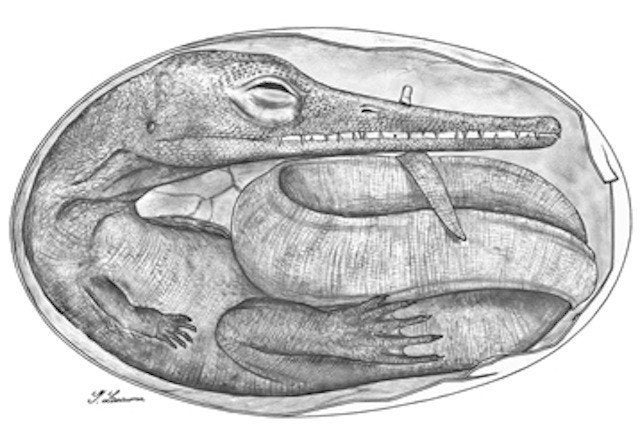
Fossilized embryos unearthed recently in South America are having a big impact on paleontologists’ ideas about prehistoric reptiles' way of life.
The little fossils suggest that some reptiles could have been “viviparous,” meaning that instead of laying eggs, they gave birth to live young.
The fossils are what’s left of aquatic reptiles that lived about 280 million years ago—prehistoric animals that scientists call mesosaurs, not to be confused with mosasaurs, which were also a marine reptile.
One of the fossils, found in Brazil, preserves of a baby mesosaur still inside its mother. Another fossil, unearthed in Uruguay, shows an embryo not inside a mother but on its own.
The finds were described in the March issue of the journal Historic Biology.
"I received a big shock when I realized that what I had collected was indeed a very small, curled mesosaur, the smallest I have seen ever,” study co-author Dr. Graciela Piñeiro, associate professor of paleontology at Facultad de Ciencias told USA Today by e-mail about the Uruguayan fossil. She said it was "exquisitely preserved.”
Researchers said in the study they also found at least 26 small bones, believed to be late embryos, and larger mesosaur skeletons.
Just last year, scientists reported that "whale-like" marine reptiles, plesiosaurs, birthed live young. The report came after the fossil of a pregnant plesiosaur was analyzed.
Check out the video below for more insight into the life and death of ancient reptiles, including the plesiosaur.
